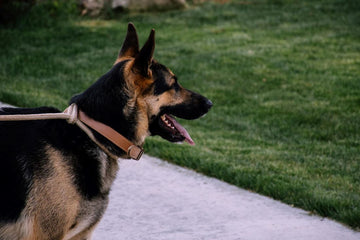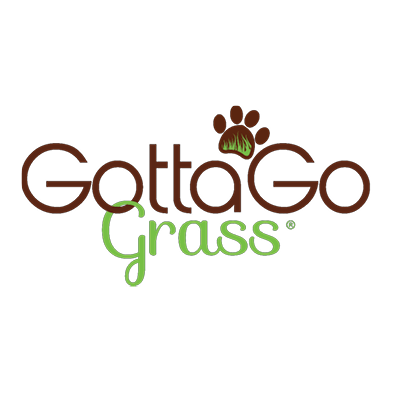
Dogs are beloved companions that offer us loyalty, protection, and unconditional love. But some can struggle with canine aggression, particularly toward other dogs. Dog-dog aggression can be unsettling and, at times, dangerous. While some reactive behaviors may seem sudden, most dogs display subtle signs before things escalate.
Occasional tension between dogs—including those who live together—is normal. Just like people, dogs have boundaries and preferences. A snarl or growl can be a form of canine communication, letting another dog know to back off. However, when a dog reacts aggressively or displays threatening or harmful behavior on a regular basis, it's a red flag that shouldn't be ignored.
Whether the aggression stems from fear, frustration, past trauma, or something else entirely, pet parents need to understand what's happening and know how to intervene.
What Is Dog-Dog Aggression?
Dog-dog aggression refers to hostile or threatening behavior directed from one dog to another. It can occur between unfamiliar dogs at parks, on walks, or even between dogs living in the same household.
This type of aggression in dogs can be rooted in fear, pain, frustration, social dynamics, or even miscommunication. Sometimes, it’s situational, and other times, it may be the result of a deeper issue. While most dogs rarely bite, consistent aggressive displays should always be taken seriously.
Warning Signs and Aggressive Behaviors
Dogs often give subtle warning signs before escalating to physical aggression. These signals can occur rapidly, making an aggressive reaction appear sudden. Recognizing these early cues of canine aggression is key to preventing serious incidents.
Early Signs of Aggression
-
Yawning
-
Lip licking
-
Nose bumping
-
Hard staring
-
Freezing in place
Escalated Behaviors
-
Growling
-
Air snapping
-
Lunging
-
Mouthing without pressure
-
Biting with bruising or skin tearing
A growl or snark isn’t always a bad thing. It’s a dog's natural way to express discomfort or boundaries—especially with unknown dogs. However, consistent, escalating aggression or any interaction that results in injury is not normal and should be addressed immediately.

Common Types of Inter-Dog Aggression
Aggression doesn’t always look the same or come from the same source. Understanding the different types can help you better assess your dog’s behavior.
Fear-based aggression is triggered by anxiety or past trauma. It may look like avoidance or defensive biting and can worsen over time if not addressed.
Frustration-based aggression, or barrier frustration, is often seen when dogs are behind fences or leashed. They act out because they’re unable to reach a desired object or dog.
Territorial aggression occurs when a dog defends its space, home, yard, or even the car from other dogs.
Learned aggression behavior is reinforced if a dog barks or lunges and the other dog goes away. Over time, the dog learns that aggressive reactions get results.
Gender-related aggression is more common in intact male dogs, especially toward other male dogs or when competing for a mate.
Possessive or resource guarding is when some dogs aggressively protect food, toys, favorite people, or resting spots.
Redirected aggression occurs when a dog becomes aroused or overstimulated by a trigger and redirects its frustration toward a nearby dog.
Pain-elicited aggression happens when a dog experiencing pain lashes out, even at familiar or friendly companions.
Social or status-related aggression often stems from perceived hierarchy disputes, particularly in multi-dog households.
Predatory aggression is triggered by movement, usually involving smaller dogs or animals, and may resemble hunting behavior more than typical canine aggression.
Each aggressive response can be complex and influenced by multiple overlapping factors.
Medical and Situational Influences on Aggression
Health and environment can also significantly influence a dog’s behavior. Chronic pain, arthritis, or undiagnosed injuries can make even calm dogs act out. Medications like corticosteroids may increase irritability or reactivity in some dogs.
Past experiences—such as trauma, poor socialization, or a history of dog fights—can also lead to fear-based or protective aggression. It’s important to understand that not all dogs enjoy or need social interaction with other dogs. Many adult dogs prefer quiet, structured environments and limited exposure to unfamiliar dogs.
Understanding your dog’s history, preferences, and physical health is key to addressing and reducing canine aggression.

Situational Examples of Dog-Dog Aggression
Dog-dog aggression can arise in various everyday situations, from neighborhood walks to interactions within the same household. If your dog behaves aggressively toward other male dogs, gets into fights at dog parks, or shows ongoing stress around other canines, it’s time to intervene. Understanding the context in which your dog reacts aggressively is key to identifying patterns and creating an effective plan to manage the behavior.
Dog-to-Dog Aggression in the Same Household
Mild tension is expected from time to time, especially when dogs are adjusting to one another. A growl over a toy or brief stiffening over food can be part of normal communication.
However, repeated aggression that causes emotional distress or physical injury is serious. If one dog is constantly being targeted or a fight breaks out regularly, it must be addressed.
Intervention Tips
-
Separate the dogs using baby gates or crates during high-tension times, such as feeding.
-
Modify the environment to reduce triggers like crowded walkways or limited resources.
Conflict with a New Dog
Introducing a new dog into the home can trigger aggression, particularly if the resident dog already exhibits reactive behaviors. Common triggers include rushed or poorly managed introductions, a lack of neutral or positive experiences between the dogs, and competition for resources such as food, toys, or attention from family members. These situations can lead to tension or conflict if not handled with care and patience.
Prevention Tips
-
Use slow introductions in neutral locations, such as a park.
-
Watch body language and allow breaks.
-
Build positive associations between the dogs using treats and praise.
If long-term stress continues despite efforts, rehoming one of the dogs may be the most compassionate choice for everyone involved.
Dog-to-Dog Aggression During Leashed Walks
Many pet parents are surprised when their dog behaves aggressively on walks, especially if the same dog is friendly when off-leash. This type of reaction is often rooted in frustration-based aggression or a response to feeling confined. The leash limits a dog’s ability to approach or retreat naturally, heightening stress and potentially leading to reactive behaviors. In some cases, dogs become overstimulated and redirect their frustration toward another dog simply because they have no other outlet.
What to Do:
-
Keep your distance from triggers.
-
Train alternative behaviors (e.g., “look at me” or “heel”) and reward calmness.
-
Use tools like front-clip harnesses and avoid high-tension interactions.
Leash reactivity is common but manageable with consistency and patience.

How to Handle and Manage Dog-Dog Aggression
Dog-dog aggression can be stressful, but most cases can be improved with a thoughtful, step-by-step approach.
Step 1: Assess the Situation
Observe your dog closely to identify patterns. When does aggression occur? Who is the target? Is it specific to other male dogs, unknown dogs, or certain places like dog parks? Understanding your dog’s triggers is the first step toward change.
Step 2: Rule Out Medical Causes
Always consult your veterinarian to rule out any underlying health issues. Pain aggression is often overlooked but can explain a sudden aggressive reaction in an otherwise friendly dog. Blood tests, orthopedic checks, or even dental exams can reveal hidden discomfort.
Step 3: Environmental Management
Until aggression is under control, structure your environment to prevent unwanted interactions.
-
Use crates, gates, and leashes indoors.
-
Avoid high-risk settings like busy dog parks or crowded walking paths.
-
For dogs who are reactive outdoors, consider indoor potty options like a dog grass pee pad. These pads allow your dog to relieve themselves without exposure to other dogs during training.
Management isn’t a cure but creates safety while you work on the underlying behavior.
Step 4: Training and Behavior Modification
Behavior modification techniques like desensitization and counter-conditioning can help change your dog’s emotional response to other dogs. Reward calm behavior and gradually expose your dog to controlled, non-threatening versions of their triggers. Always set your dog up for success.
Most importantly, avoid punishment—it can suppress signals without addressing the root issue, leading to worse outcomes.
Step 5: Work with a Professional
Certified professional dog trainers and veterinary behaviorists are trained to treat aggression in dogs. They can tailor a plan to your dog’s temperament, environment, and history. Aggression cases are complex—professional help greatly improves safety and success.
Final Thoughts
Dog-dog aggression is difficult, but it’s not hopeless. Most aggressive behaviors can be reduced or even resolved with patience, structure, and the right support. Not all dogs need or enjoy canine companionship—and that’s okay. The end goal isn’t to make your dog love every dog they meet but to help them feel safe, understood, and well-managed.
In some cases, rehoming may be the kindest choice for everyone involved. Whatever your journey looks like, addressing dog aggression with empathy and informed action can lead to a safer, happier home for all.




